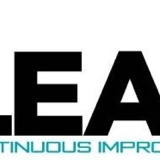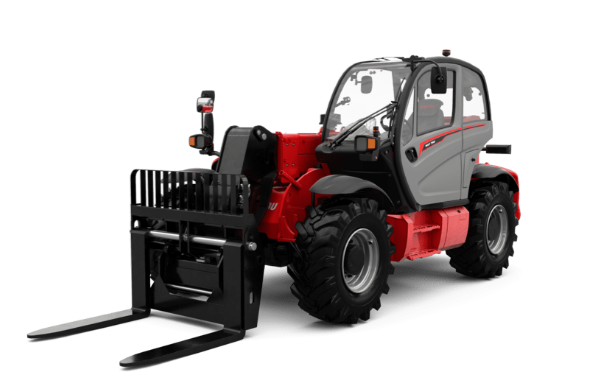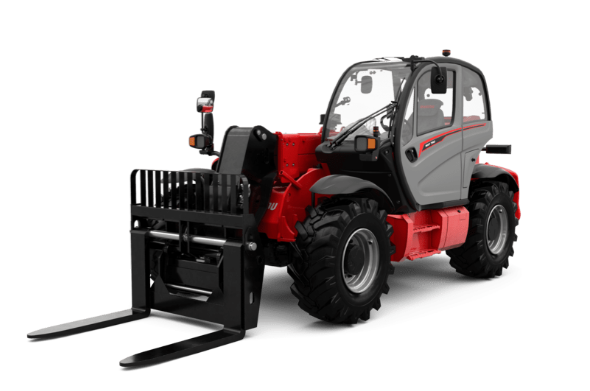Information
-
Document No.
-
Audit Title
-
Client / Site
-
Conducted on
-
Prepared by
-
Location
-
Personnel
Employer Posting
-
Is the required OSHA Job Safety and Health Protection Poster displayed in a prominent location where all employees are likely to see it?
-
Are emergency telephone numbers posted where they can be readily found in case of an emergency?
-
Where employees may be exposed to toxic substances or harmful physical agents, has appropriate information concerning employee access to medical and exposure records and MSDS been posted or otherwise made readily available to affected employees?
-
Are signs concerning exit routes, room capacities, floor loading, biohazards, exposure to x-ray, microwave or other harmful radiation or substance posted where appropriate?
-
Is the summary of Work-Related injuries and illnesses (OSHA Form 300A) posted during the months of February, March and April?
Record keeping
-
Are occupational injuries or illnesses, except minor injuries requiring only first aid, recorded as required on the OSHA 300 log?
-
Are employee medical records and records of employee exposure to hazardous substances or harmful physical agents up-to-date and in current OSHA standards?
-
Are employee training records kept and accessible for review by employees as required by OSHA standards?
-
Have arrangements been made to retain records for the time period for each specific type of record?
-
Are operating permits and records up-to-date for items such as elevators, air pressure tanks, liquified petroleum tanks, etc?
Safety and Health Program
-
Do you have an active safety and health program in operation that includes general safety and health program elements as well as the management of hazards specific to your work-site?
-
Is one person clearly responsible for the safety and health program?
-
Do you have a safety committee or group made up of management and labor representatives that meets regularly and reports in writing on its activities?
Medical Services and First Aid
-
Is there a hospital or clinic for medical care near your workplace or is at least one employee on each shift currently qualified to render first aid?
-
Are medical personnel readily available for advice and consultation on matters of employees' health?
-
Are emergency phone numbers posted?
-
Are fully supplied first aid kits easily accessible to each work area, inspected monthly and replenished as needed?
-
Have first aid kits and supplies been approved for the particular area or operation they are in?
-
Is there an eye-wash station or sink available for quick drenching or flushing of the eyes and body in areas where corrosive liquids or materials are handled?
Environmental Controls
-
Are all work areas properly illuminated?
-
Are all hazardous substances identified?
-
Are employees aware of the hazards involved with various chemicals they may be exposed to?
-
Are employee exposure levels kept at an acceptable level?
-
Is work ventilation adequate?
-
Are spray painting operations performed in a room or booth with ventilation?
-
Are nearby workers provided with flash shields during welding operations?
-
Are noise levels within acceptable levels?
-
Are caution labels and signs used to warn of hazardous substances?
-
Are there written standard operating procedures for the selection and use of respirators where needed?
Fire Protection
-
Is a Fire Prevention Plan in place, current and discussed with employees?
-
Is your local fire department familiar with your facility, it's location and specific hazards?
-
If you have a fire alarm system, is it certified as required and tested annually?
-
If you have interior standpipes and valves, are they inspected regularly?
-
If you have outside private fire hydrants, are they flushed at least once a year and on a routine preventative maintenance schedule?
-
Are fire doors and shutters in good operating condition?
-
Are fire doors and shutters un-obstructed and protected against obstructions, including their counterweights?
-
Are fire door and shutter fusible links in place?
-
Are automatic sprinkler system water control valves, air and water pressure checked periodically as required?
-
Is the maintenance of automatic sprinkler systems assigned to responsible persons or to a sprinkler contractor?
-
Are sprinkler heads protected by metal guards if exposed to potential physical damage?
-
Is proper clearance maintained below sprinkler heads? (18 inches clearance from sprinkler head to material below)
-
Are portable fire extinguishers provided in adequate numbers, type and mounted in readily accessible locations? (Travel distance from hazard area to extinguisher should be 50 feet or less)
-
Are fire extinguishers inspected and charged yearly by certified company and it noted on tag?
-
Are fire extinguishers inspected monthly and it recorded either on tag or in other paperwork?
-
Are employees periodically instructed in the use of fire extinguishers and the fire protection procedures?
PPE
-
Have hazards been determined in the work area and appropriate PPE required?
-
Are employees required to use appropriate PPE for job tasks?
-
Are employees properly trained on PPE use? (When to use, proper use and how to adjust)
-
Are protective goggles or face shields provided and used when there is danger of flying particles or corrosive material?
-
Are protective gloves, aprons or shields provided and used where there could be an exposure to corrosive liquids, chemicals, blood or other potentially infectious materials?
-
Are hard hats inspected periodically to make sure they are in accordance to OSHA standards?
-
Are approved respirators provided and used when required?
-
Is protection against the effects of noise exposure provided and used when required by OSHA standards?
-
Are adequate work procedures, PPE and other equipment provided and used when cleaning up spilled hazardous materials?
-
Are appropriate procedures in place to dispose of contaminated PPE?
General Work Environment
-
Clean, sanitary and orderly?
-
Work area dry and surfaces slip resistant?
-
Are spilled hazardous materials or liquids cleaned up immediately and according to procedures?
-
Is combustible scrap, debris and waste stored safely and removed promptly?
-
Are covered metal waste cans used for oily or paint-soaked waste?
-
Are paint spray booths, dip tanks, etc., cleaned regularly?
-
Are the minimum number of toilets and washing facilities provided and maintained in a clean and sanitary fashion?
-
Are all work areas adequately illuminated?
-
Are all pits and floor openings covered or otherwise guarded?
-
Have all confined spaces been evaluated for compliance with OSHA?
Walkways
-
Are aisles and passageways kept clear as appropriate?
-
Are wet surfaces covered with non-slip materials?
-
Are holes in floor, sidewalk or other walking surface repaired properly or otherwise made safe?
-
Is there safe clearance for walking in aisles where motorized or mechanical handling equipment is operating?
-
Are materials or equipment stored in such a way that sharp projections will not interfere with the walkway?
-
Are spilled materials cleaned up immediately?
-
Are changes in directions or elevation readily identifiable?
-
Are aisles or walkways that pass near moving equipment or operating machinery, welding operations arranged so employees will not be subjected to potential hazards?
-
Is adequate headroom provided the entire length of any aisle or walkway?
-
Are standard guardrails provided wherever aisles or walkway surfaces are elevated more than 30 inches above any adjacent floor or the ground?
Floor and Wall openings
-
Are floor openings guarded by a cover, a guardrail or equivalent on all sides? (Except at stairs or ladder entrance)
-
Are toeboards installed around the edges of permanent floor openings where persons may pass below the opening?
-
Are skylight screens able to withstand a load of at least 200 lbs?
-
Is glass in windows, doors, walls, etc., subject to possible human impact of sufficient thickness and type for the condition of use?
-
Are grates or similar type covers over floor openings such as floor drains designed to allow unimpeded foot traffic or rolling equipment?<br>
-
Are unused portions of service pits and pits not in use either covered or protected by guardrails or equivalent?
Stairs and Stairways
-
Do standard stair rails or handrails on all stairways have at least 4 risers?
-
Are all stairways at least 22 inches wide?
-
Do stairs have landing platforms not less than 30 inches in the direction of travel and extend 22 inches in width at every 12 feet or less vertical rise?
-
Do stairs angle no more than 50 and no less than 30 degrees?
-
Are stairs of hollow-pan type treads filled to the top edge of the pan with a solid material?
-
Are step risers on stairs uniform from top to bottom?
-
Are steps slip-resistant?
-
Are stairway handrails located between 30 inches and 34 inches above the leading edge of stair treads?
-
Do stairway handrails have at least 3 inches of clearance between the handrails and the wall or surface they are mounted on?
-
Where door or gates open directly on a stairway, is a platform provided so the swing of the door does not reduce the width of the platform to less then 21 inches?
-
Are stairway handrails capable of withstanding a load of 200 lbs, applied within 2 inches of the top edge in any downward or outward direction?
-
Where stairways exit directly into area where vehicles may be operated, are adequate barriers and warnings provided to prevent employees from stepping into the path of traffic?
-
Do stairway landings have a dimension measured in the direction of travel at least equal to the width of the stairway?
-
Is the vertical distance between stairway landings limited to 12 feet or less?
Elevated Surfaces
-
Are signs posted showing the elevated surface load capacity?
-
Are surfaces that are elevated more than 30 inches provided with a standard guardrail?
-
Are elevated surfaces beneath which people or machinery could be exposed to falling objects provided with standard 4 inch toeboards?
-
Is a permanent means of access and egress provided to elevated storage and work surfaces?
-
Is required headroom provided where necessary?
-
Is material on elevated surfaces piled, stacked or racked in a manner to prevent it from tipping, falling, collapsing, rolling or spreading?
-
Are dock boards or bridge plates used when transferring materials between docks and trucks or railcars?
Exiting or Egress- Evacuation
-
Is an Emergency Action Plan in place, easily accessible to employees and discussed with employees?
-
Is an Emergency Response Plan in place, easily accessible to employees and discussed with employees?
-
Are all exits marked with an exit sign and illuminated by a reliable light source?
-
Are the directions to exits, when not immediately apparent, marked with visible signs?
-
Are doors, passageways or stairways that are neither exits nor access to exits, but could be mistaken for exits, appropriately marked "NOT AN EXIT," "OFFICE," etc?
-
Are exit signs labeled with the word "EXIT" in lettering at least 5 inches high and the stroke of the lettering at least 1/2 inch wide?
-
Are exit doors side hinged?
-
Are all exits kept free of obstructions?
-
Are at least 2 means of egress provided from elevated platforms, pits or rooms where the absence of a second exit would increase the risk of injury?
-
Are there sufficient exits to permit prompt escape in case of an emergency?
-
Are special precautions taken to protect employees during construction and repair operations?
-
Is the number of exits from each floor of a building and the number of exits from the building itself appropriate for the building occupancy load?
-
Are exit stairways that are required to be separated from other parts of a building enclosed by at least 2 hour fire resistive construction in buildings more then 4 stories in height and not less than 1 hour fire resistive construction elsewhere?
-
Where ramps are used as part of required exiting from a building, is the ramp slope limited to 1 foot vertical and 12 feet horizontal?
-
Where exiting will be through frameless glass doors, storm doors, etc, are the doors fully tempered and meet the safety requirements for human impact?
Exit Doors
-
Are doors that are required to serve as exits designed and constructed so that the path of exit travel is obvious and direct?
-
Are windows that could be mistaken for exit doors made inaccessible by means of barriers or railings?
-
Are exit doors able to be opened from the direction of exit travel without the use of a key or any special knowledge or effort when the building is occupied?
-
Is revolving, sliding or overhead door prohibited from serving as a required exit door?
-
Where panic hardware is installed on a required exit door, will it allow the door to open by applying a force of 15 lbs or less in the direction of the exit traffic?
-
Where exit doors open directly onto any street, alley or other area where vehicles may be operated are barriers and warnings provided to prevent employees from stepping into the path of traffice?
-
Are doors that swing in both directions and are located between rooms where there is frequent traffic provided with viewing panels in each door?
Portable Ladders
-
Are all ladders in good condition, hardware secure and moveable parts operating freely?
-
Are non slip safety on ladder and are rungs and steps free of grease and oil?
-
Are employees prohibited from placing ladders in front of doors opening towards the ladder unless the door is blocked open, locked or guarded?
-
Are employees prohibited from placing ladders on boxes, barrels or other unstable bases to obtain additional height?
-
Are employees required to use ladders for only their intended purpose and use them properly?
-
Are broken or loose ladders prohibited from being used?
-
If a portable ladder is used to gain access to elevated platforms, roofs, etc., does it extend at least 3'feet above the elevated surface?
-
Are employees required to secure the base of a portable ladder to prevent slipping or otherwise lash or hold it in place?
-
Do metal ladders have legible warning to not use around electrical equipment?
Hand Tools and Equipment
-
Are tools in good condition?
-
Are hand tools that develop mushroom heads during use, reconditioned or replaced as necessary?
-
Are broken or fractured handles replaced?
-
Are worn or bent wrenches replaced?
-
Are handles wedged tightly into the heads of all tools?
-
Are tool cutting edges kept sharp?
Power Tools
-
Are guards in place and at appropriate setting according to OSHA standards?
-
Are portable circular saws equipped with guards above and below the base shoe?
-
Are circular saw guards in good working order and the lower part of the blade guarded?
-
Are all cord-connected electrically operated tools and equipment effectively grounded or of the approved double insulated type?
-
Are effective guards in place over belts, pulleys, chains and sprockets on equipment?
-
Are portable fans provided with full guards or screens have openings 1/2in or less?
-
Is hoisting equipment available and used for lifting heavy objects and are hoist ratings appropriate for the task?
-
Are pneumatic and hydraulic hoses on power operated tools checked regularly for deterioration or damage?
Grinders
-
Is work rest used and kept adjusted to within 1/8 inch of the wheel?
-
Do side guards cover the spindle nut and flange and 75% of the wheel diameter?
-
Are bench and pedestal grinders permanently mounted?
-
Are goggles and face shield always worn when grinding?
-
Is the RPM rating of wheel compatible with grinder?
-
Does the ON/OFF switch work correctly?
-
Is the grinder effectively grounded?
-
Are new abrasive wheels visually inspected and given a ring test before being mounted?
-
Is area around grinder clean and orderly?
Welding, Cutting and Brazing
-
Are only trained and authorized personnel permitted to use equipment?
-
Have all operators been trained on operating procedures?
-
Are compressed gas cylinders regularly examined for defects, rusting and leaks?
-
Is care used to handle cylinders to prevent damage?
-
Are only approved apparatuses used? (Torches, regulators, etc)
-
Are cylinders kept away from heat sources?
-
Is it prohibited to use to cylinders as rollers or supports?
-
Are empty cylinders marked and valves closed?
-
Are "NO SMOKING" signs posted?
-
Are cylinders, valves, couplings, regulators, apparatuses and hoses kept free of oily or greasy substances?
-
Is care taken to not drop or strike cylinders?
-
Are cylinders not in use have the valves turned off, stored up-right and valve protection caps on?
-
Is grounding of welding machine and safety ground connections checked periodically?
-
Are electrodes removed from the holders when not in use?
-
Is power to welder shut off when no one is in attendance?
-
Is suitable fire extinguisher available for immediate use?
-
Is welder forbidden to coil or loop welding electrode cable around body?
-
Are lead cables inspected frequently for wear and damage and replaced when needed?
-
Are shields used to confine heat, sparks and slag when needed?
-
Is fire watch assigned when needed?
-
Is appropriate PPE used?
Compressed Gas Cylinders
-
Are cylinders legibly marked to clearly identify the type of gas?
-
Is oxygen and acetylene tanks stored 25 feet apart or separated by a 5 foot tall fire wall when not in use?
-
Are cylinders stored in areas protected from external heat sources?
-
Are cylinders stored in areas where they will not be damaged by passing or falling objects or subject to tampering by unauthorized personnel?
-
Are cylinders stored or transported in a manner to prevent them from creating a hazard by tipping, falling or rolling?
-
Are valve protectors always placed on cylinders that are not in use or connected for use?
-
Are valves closed before moved, when a cylinder is empty or at the completion of a job?
-
Are cylinders inspected periodically for corrosion, general distortion, cracks or other defects?
-
Are unfit cylinders removed from service and tagged?
LOTO
-
Is appropriate LOTO equipment provided to employees?
-
Are employees trained on how to use LOTO equipment correctly?
-
Are LOTO procedures in place?
Compressors and Compressed Air
-
Are compressors equipped with pressure relief valves and pressure gauges?
-
Are compressors operated and maintained according to manufacturers recommendations?
-
Are safety devices checked frequently?
-
Are signs posted to warn of the automatic starting feature of the compressors?
-
Is the belt drive system totally enclosed to provide protection for the front, back, top and sides?
-
Are employees strictly prohibited from directing compressed air towards a person?
-
Are employees prohibited from using highly compressed air for cleaning purposes?
-
When using compressed air is used to clean clothing, are employees trained to reduce the pressure to less than 10psi?
-
Are safety chains or locking devices used at couplings of high pressure hose lines where a connection failure is possible?
-
When compressed air is used to inflate auto tires, are clip-on chuck and in-line regulator preset to 40psi?
Hoist and Auxiliary Equipment
-
Does the overhead electric hoist have a limit device to stop the hook at its highest and lowest point of safe travel?
-
Will the hoist automatically stop and hold any load up to 125% of its rated load of its actuating force is removed?
-
Is the rated load of each hoist legibly marked and visible to the operator?
-
Are stops provided at the safe limits of travel for trolley hoists?
-
Are the controls of hoist plainly marked?
-
Is each cage controlled hoist equipped with an effective warning device?
-
Are close fitting guards installed on each hoist to ensure that hoist ropes will be maintained in the sheave grooves?
-
Are hoist chains and ropes long enough to handle the full range of movement while maintaining 2 full wraps around the drum at all times?
-
Are guards provided for nip points between hoist ropes and sheaves permanently located within 7 feet of the floor, ground or working platform?
-
Are chains and slings that are kinked or twisted prohibited from use?
-
Are employees prohibited from using the hoist rope or chain wrapped around the load as a substitute for a sling?
-
Is it prohibited to carry loads over people?
Forklifts
-
Do only trained personnel operate forklifts?
-
Are forklift operating procedures trained and followed?
-
Does the forklift have a warning horn, whistle or other device that can be clearly heard above normal noise in areas where it is operated?
-
Are brakes capable of stopping vehicle when fully loaded?
-
Is the parking brake fully functional?
-
Are areas checked for concentrations of dangerous gases or fumes where forklifts are operated?
-
Are employees prohibited from standing or passing under elevated portions of forklift, whether loaded or unloaded?
-
Are loads handled only within the rated capacity of the truck?
-
Are trucks in need of repair removed from service immediately?
-
Are daily inspection reports filled out?
Flammable and Combustible Materials
-
Are all connections on drums and combustible liquid piping, vapor and liquid tight?
-
Are all flammable liquids kept in closed containers when not in use?
-
Are "NO SMOKING" signs posted around flammable material?
-
Is fuel kept in safety cans?
Hazardous Chemical Exposure
-
Are eyewash fountains and safety showers provided in areas where corrosives are handled?
-
Are all containers labeled with its contents?
-
Are employees prohibited from eating around hazardous substances?
-
Is a written respiratory program in place?
Hazardous Substances Communication
-
Is there a list of hazardous substances used in your workplace and SDS's available for each substance?
-
Is a list of substances kept, both currently used and not used, for required amount of time by OSHA?
-
Are SDS's updated frequently?
-
Is each container labeled?
Electrical
-
Do extension cords have a grounding conductor?
-
Are multiple plug adapters prohibited?
-
Are exposed wiring and cords with frayed or deteriorated insulation required or replaced promptly?
-
Are flexible cords and cables free of splices or taps?
-
Are all disconnecting switches and circuit breakers labeled to indicate their use or equipment served?
-
Are all unused openings in breaker box closed with appropriate covers, plugs or plates?
-
Are all switches, receptacles, junction boxes, etc., provided with tight fitting covers or plates?
-
Are employees prohibited from storing material within 36 inches of the breaker box?
Noise
-
Are there areas in the workplace where continuous noise levels exceed 85 decibels?
-
Is there a written noise exposure program in place?
-
Is approved hearing protective equipment available to employees?
-
Is audio metric test performed yearly?
-
All the above information has been reviewed with the following individuals. A copy of this audit will be emailed to the District Manager, District HSE Rep and the Regional Manager.
-
Add signature
-
Add signature



















